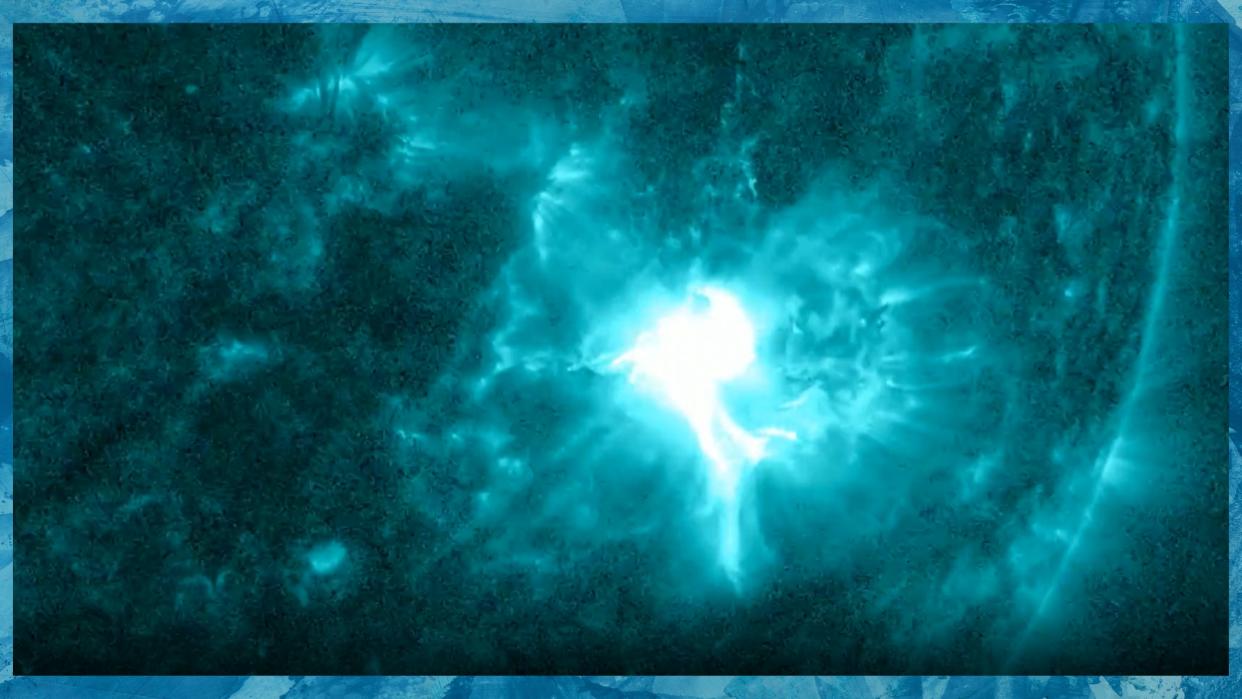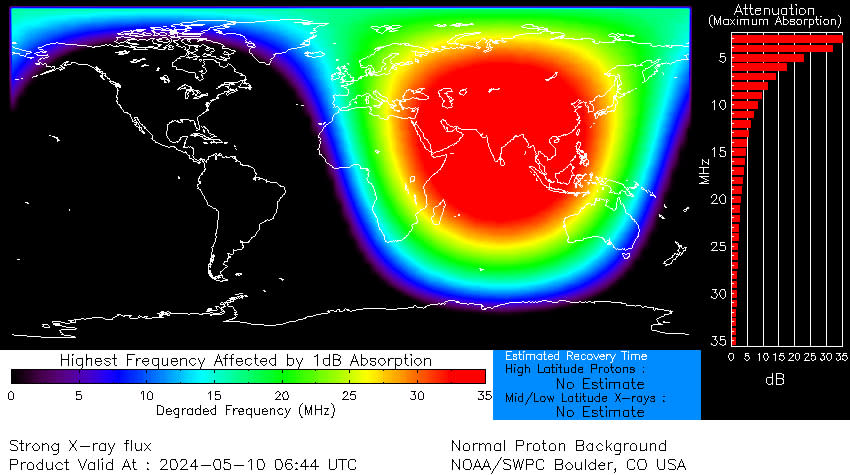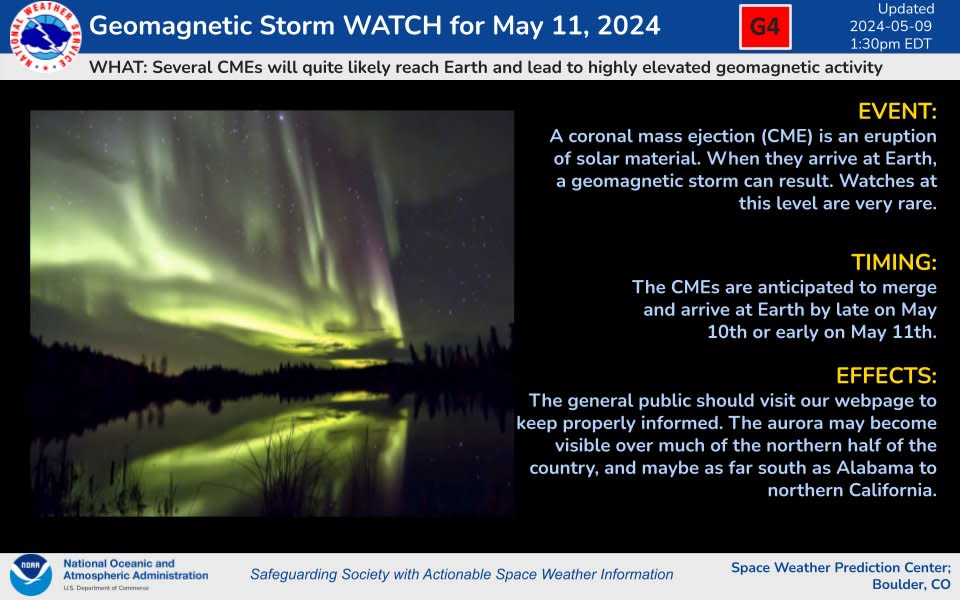Behemoth sunspot AR3664 unleashes its biggest solar flare yet, sparking radio blackouts on Earth (video)

It's gone and done it again.
Colossal sunspot AR3664 has unleashed its most powerful solar flare yet, and Earth is once again in the firing line.
The X3.98 flare peaked in the early hours this morning (May 10) at 2:54 a.m. (0654 GMT) triggering either temporary or complete loss of high frequency (HF) radio signals across Asia, eastern Europe and eastern Africa.
Related: 4 large incoming solar bursts could supercharge the auroras this weekend
The X3.98 flare this morning is not only AR3664's largest solar flare to date, but also the 4th largest solar flare this solar cycle according to solar physicist Keith Strong's post on X.
Solar flares are eruptions from sunspots on our sun's surface that emit intense bursts of electromagnetic radiation. They are categorized by size into lettered groups, with X-class flares being the most powerful. Then, there are M-class flares that are 10 times less powerful than X-class flares, followed by C-class flares which are 10 times weaker than M-class flares. B-class are 10 times weaker than C-class flares and, finally, A-class flares are 10 times weaker than B-class flares and have no noticeable consequences on Earth. Within each class, numbers from 1-10 (and beyond for X-class flares) denote a flare's relative strength.
Radio blackouts

Shortwave radio blackouts like those witnessed this morning over Asia, eastern Europe and eastern Africa are common occurrences shortly after powerful solar eruptions due to strong pulses of X-rays and extreme ultraviolet radiation emitted during the event.
The radiation travels toward Earth at the speed of light and ionizes (gives electrical charge to) the top of Earth's atmosphere, creating a higher-density environment for the radio signals to navigate through. (Note: These ionizing X-rays are not to be confused with coronal mass ejections, or CMEs, by which plasma and magnetic fields erupt from the sun. CMEs travel at slower speeds and often take several days to reach Earth.)
When attempting to travel through that ionized layer, radio waves can't help but interact with electrons that've now flooded their environment. In doing so, the radio waves lose energy due to more frequent collisions with the electrons. This can lead to radio signals becoming degraded or completely absorbed, according to the National Oceanic and Atmospheric Administration's (NOAA) Space Weather Prediction Center (SWPC).
Incoming solar storms
Related stories:
— 2 colossal solar flares explode from the sun and Earth is in the firing line (video)
— NASA prepares for intense sun storms on Mars during solar maximum
— Wild solar weather is causing satellites to fall. It's going to get worse.
This recent X-flare eruption was also accompanied by a CME, a large expulsion of plasma and magnetic field from the sun.
"CME FROM RECENT X-FLARE CONFIRMED: Watch the bright region in the SW (AR3664). You will see the X flare go off in it and almost immediately a CME is launched," solar physicist Keith Strong posted on X.
"A CME is now visible and appears the bulk is heading to the west, but an Earth directed component is still likely," according to space weather and aurora website SolarHam's post on X.
This wouldn't exactly come as a surprise. AR3664, along with its explosive "cousin" AR366 — which has since slithered around the solar disk and beyond the view from Earth — has been at the forefront of solar weather news this past week.
Just yesterday (May 9), the NOAA's SWPC issued a level G4 geomagnetic storm watch for this weekend. The predicted elevated geomagnetic activity is a result of several CMEs seen currently barreling toward Earth after several large solar eruptions a few days prior.
Read more: 4 large incoming solar bursts could supercharge the auroras this weekend

Heightened solar activity
The incredibly active sun this past week is a good indicator that we are approaching solar maximum, the peak period of solar activity during the sun's approximately 11-year solar cycle.
Solar scientists are keeping a watchful eye on the sun as it approaches solar maximum because such heightened activity can indeed impact our lives on Earth.
Energetic solar flares can significantly affect spacecraft, satellites and ground-based technologies, traveling at the speed of light, and they don't give a lot of notice before striking. That's why numerous organizations — including NASA, the NOAA and the U.S. Air Force Weather Agency (AFWA) — are monitoring the sun closely. These organizations can send out warnings to technology and infrastructure sectors vulnerable to solar flare activity so that appropriate precautions can be taken in the event of potentially harmful space weather.
"We can't ignore space weather, but we can take appropriate measures to protect ourselves," NASA says.
But there is no need to worry; so-called "killer flares" do not exist. Though solar flares can significantly disrupt the technological world, they don't contain enough energy to do any lasting damage to Earth itself.
"Even at their worst, the sun's flares are not physically capable of destroying Earth," NASA says.

